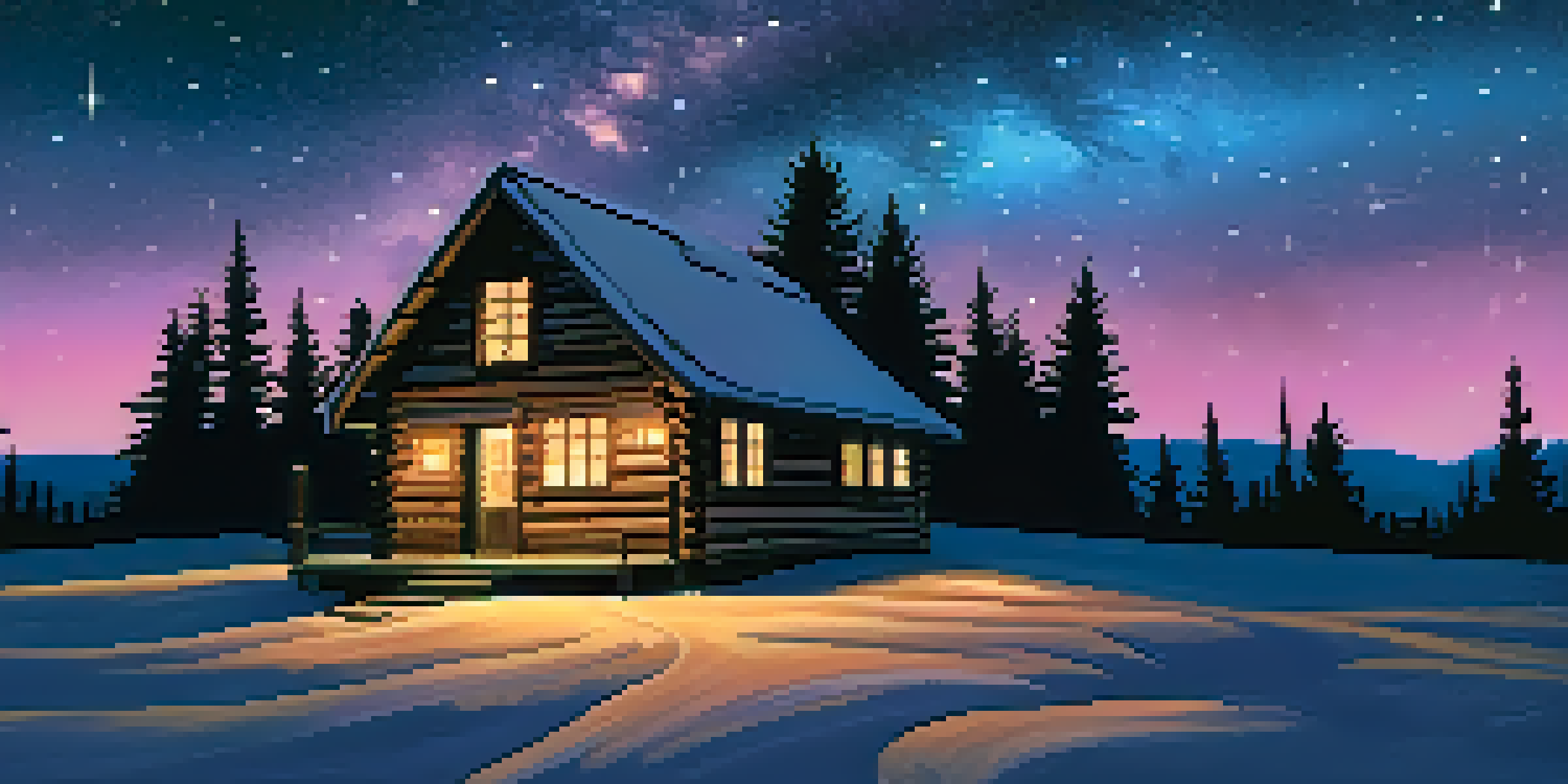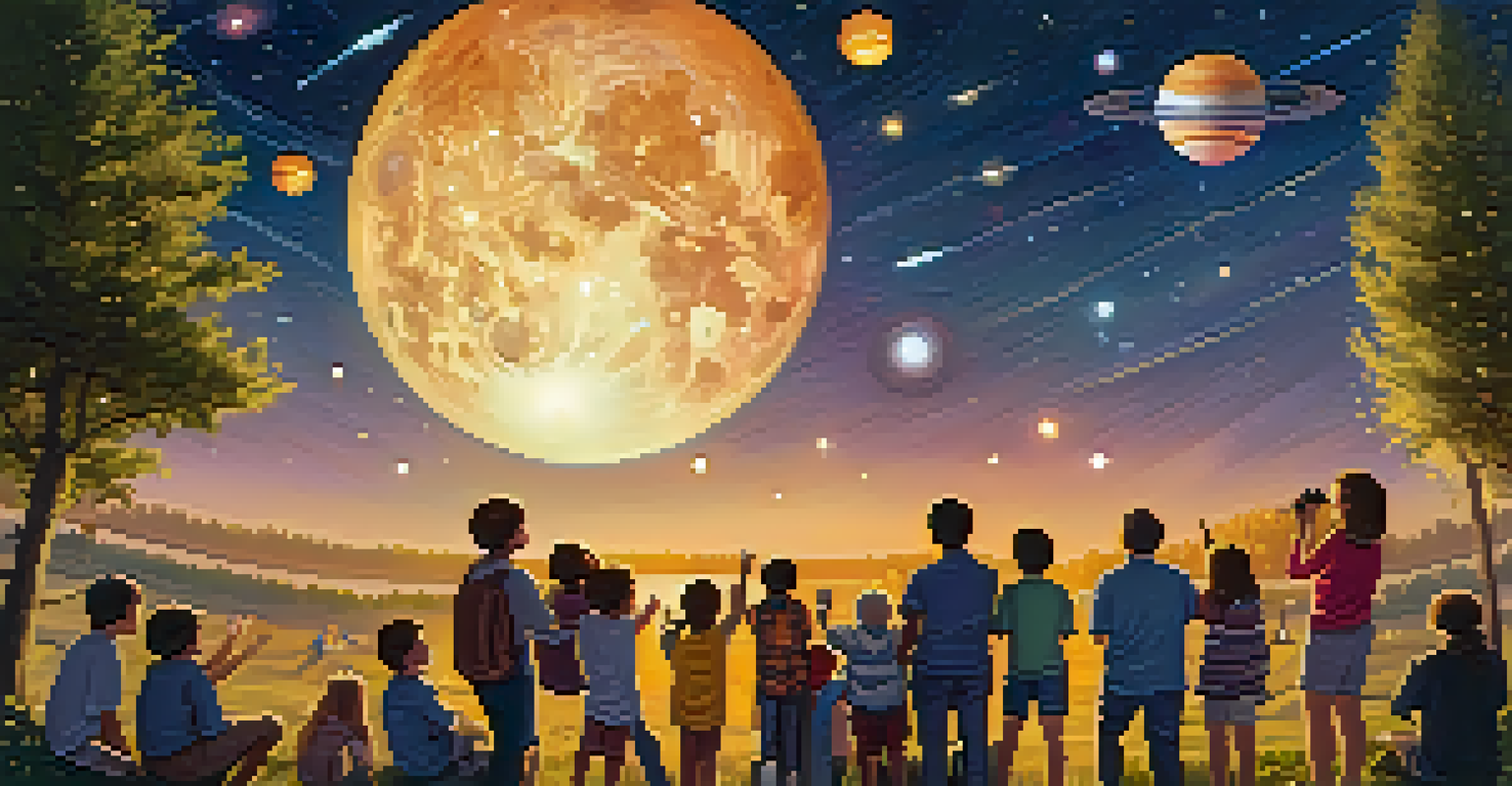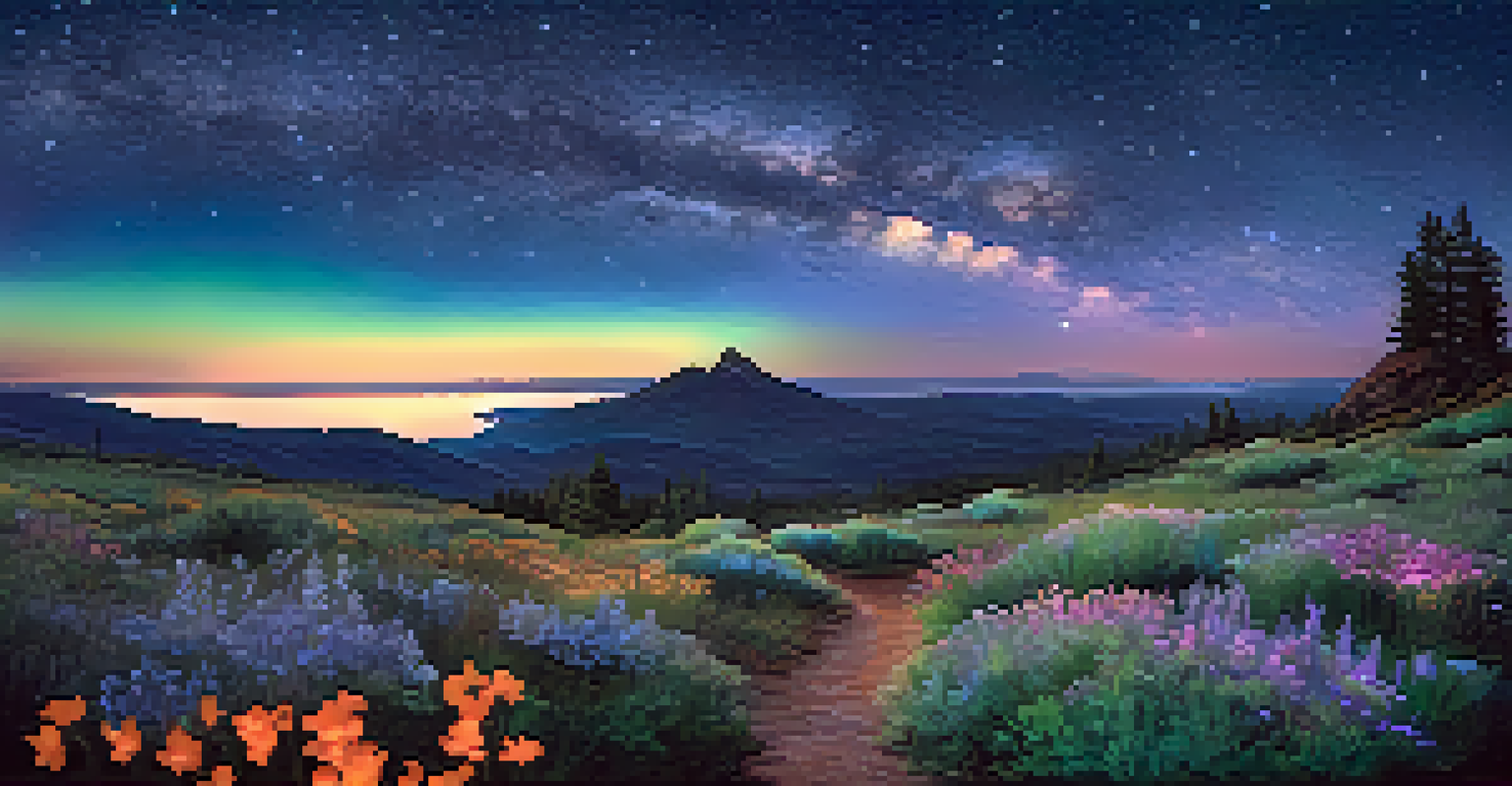The Role of Local Government in Night Sky Conservation

Understanding Night Sky Conservation and Its Importance
Night sky conservation is more than just a trendy topic; it's about preserving our natural heritage. The beauty of a starry night is something many of us take for granted until city lights drown it out. This conservation effort aims to reduce light pollution, improve visibility of celestial bodies, and enhance the overall quality of life for both residents and wildlife.
The clearest way into the Universe is through a forest wilderness.
As urban areas expand, artificial lighting becomes more pervasive, leading to various environmental and health issues. For instance, light pollution affects nocturnal animal behavior, disrupts ecosystems, and even impacts human sleep patterns. By focusing on night sky conservation, we can reclaim our connection to the universe and ensure future generations can enjoy the wonders of the night sky.
Local governments play a pivotal role in this effort, as they are often the first line of defense against light pollution. They have the authority to implement policies and regulations that can significantly impact our night skies. Understanding the importance of this conservation is the first step toward effective action.
The Role of Local Governments in Policy Creation
One of the primary ways local governments contribute to night sky conservation is through policy creation. They can establish lighting ordinances that regulate the amount and type of light used in public spaces. For example, implementing guidelines that require shielded fixtures can help direct light downward, minimizing skyglow and preserving the natural darkness of the night.

Moreover, local governments can encourage the use of energy-efficient lighting options that reduce overall light pollution. By adopting ‘dark sky’ standards, they can create a framework that not only protects the night sky but also promotes sustainability. These initiatives can have a lasting positive impact on both the environment and community health.
Local Policies Shape Night Sky
Local governments play a crucial role in night sky conservation by creating lighting ordinances and promoting energy-efficient solutions.
It's essential for local governments to collaborate with community members, astronomers, and environmentalists in this policy-making process. This inclusive approach ensures that the voices of those who cherish the night sky are heard, leading to more effective and widely supported regulations.
Community Engagement and Education Initiatives
Community engagement is vital for successful night sky conservation. Local governments can host workshops, star-gazing events, and educational programs to raise awareness about the effects of light pollution. These activities not only inform residents but also foster a sense of community around a shared goal of protecting the night sky.
Light pollution is a public health issue that affects our well-being and the environment.
For instance, organizing 'star parties' where residents can gather to view celestial events encourages appreciation for the cosmos. These events can also serve as a platform for local officials to discuss the importance of reducing light pollution and how community members can contribute.
Education initiatives can extend to schools, where local governments can partner with educators to incorporate astronomy and environmental science into the curriculum. By teaching children about the night sky, we nurture future advocates for conservation.
Developing Dark Sky Reserves and Parks
Creating designated Dark Sky Reserves or Parks is an effective strategy for local governments to protect areas from light pollution. These areas are recognized for their exceptional quality of starry nights and commitment to preserving the natural night environment. By establishing such reserves, local governments can attract tourism and promote outdoor recreational activities.
Moreover, these reserves provide a space for local communities to connect with nature and learn about astronomy. They can also serve as experimental grounds for implementing sustainable lighting practices. Involving local stakeholders in the planning process ensures that the needs of the community and the environment are balanced.
Community Education is Key
Engaging the community through educational initiatives and star-gazing events fosters awareness and support for reducing light pollution.
The presence of a Dark Sky Reserve can enhance local pride and foster a sense of stewardship among residents. When communities see the tangible benefits of preserving their night skies, they are more likely to support conservation efforts.
Collaboration with Environmental Organizations
Local governments don’t have to tackle night sky conservation alone; collaboration with environmental organizations can amplify their efforts. These organizations often have the expertise and resources needed to develop effective conservation strategies. Working together can lead to more comprehensive solutions that address both light pollution and broader environmental issues.
For example, partnerships with groups focused on wildlife conservation can help highlight the ecological impacts of light pollution. This collaboration can raise awareness about how excessive artificial light affects animals’ behaviors, migration patterns, and breeding cycles. When local governments understand these connections, they can create more informed policies.
Additionally, these partnerships can facilitate community outreach programs, bringing more residents into the fold. When communities are educated about the benefits of night sky conservation, they are more likely to support local initiatives and participate in conservation activities.
Utilizing Technology for Night Sky Preservation
Advancements in technology provide local governments with innovative tools to combat light pollution. Smart lighting systems, for instance, can adjust brightness based on the time of night or pedestrian presence, reducing unnecessary illumination. This technology not only conserves energy but also minimizes the impact on the night sky.
Furthermore, local governments can utilize apps and online platforms to engage residents in reporting instances of excessive light pollution. By creating a community-based monitoring system, they can identify problem areas and address them more efficiently. This tech-savvy approach empowers residents to take an active role in protecting their night skies.
Technology Aids Conservation Efforts
Utilizing smart lighting systems and community reporting apps empowers local governments and residents to effectively address light pollution.
The integration of technology into conservation efforts also opens doors for data-driven decision-making. Local governments can analyze patterns and trends in light pollution over time, allowing them to evaluate the effectiveness of their policies and make necessary adjustments.
Evaluating the Impact of Conservation Efforts
Evaluating the impact of night sky conservation efforts is crucial for ensuring long-term success. Local governments need to establish metrics to track progress, such as reductions in light pollution levels and increased community engagement. Regular assessments help identify what strategies are working and where improvements are needed.
Surveys and feedback from the community can provide valuable insights into public perception of the night sky and the effectiveness of conservation measures. Engaging residents in this evaluation process fosters a sense of ownership over local initiatives and encourages continued support.

Moreover, sharing success stories and positive outcomes can inspire other local governments to adopt similar practices. Highlighting the benefits of night sky conservation not only promotes awareness but also reinforces the idea that preserving our natural environment is a collective responsibility.